Shuxin Zhang
ST-former for short-term passenger flow prediction during COVID-19 in urban rail transit system
Oct 14, 2022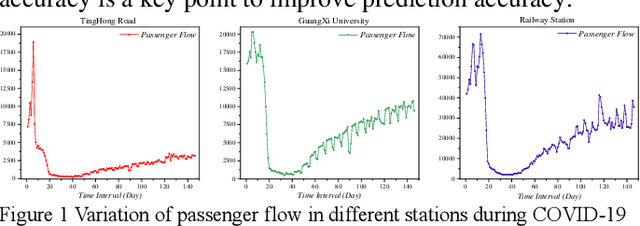
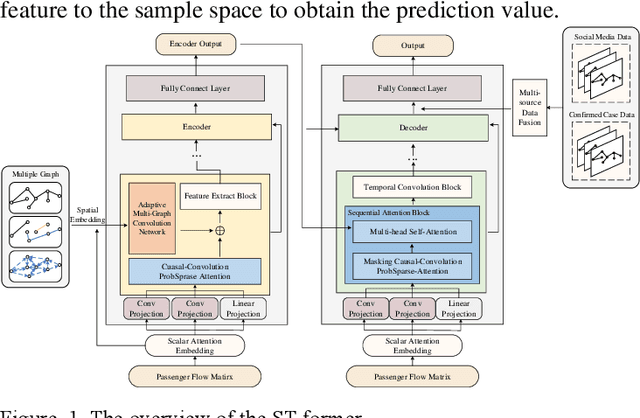
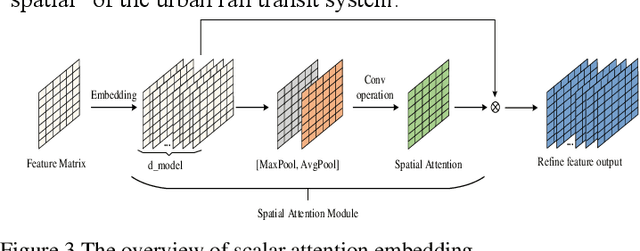
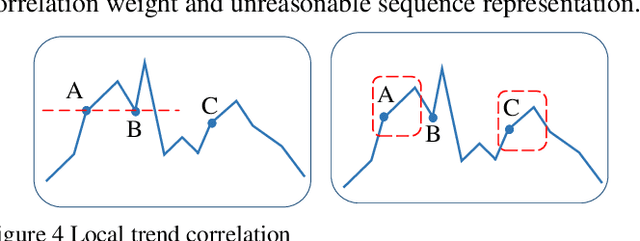
Abstract:Accurate passenger flow prediction of urban rail transit is essential for improving the performance of intelligent transportation systems, especially during the epidemic. How to dynamically model the complex spatiotemporal dependencies of passenger flow is the main issue in achieving accurate passenger flow prediction during the epidemic. To solve this issue, this paper proposes a brand-new transformer-based architecture called STformer under the encoder-decoder framework specifically for COVID-19. Concretely, we develop a modified self-attention mechanism named Causal-Convolution ProbSparse Self-Attention (CPSA) to model the multiple temporal dependencies of passenger flow with low computational costs. To capture the complex and dynamic spatial dependencies, we introduce a novel Adaptive Multi-Graph Convolution Network (AMGCN) by leveraging multiple graphs in a self-adaptive manner. Additionally, the Multi-source Data Fusion block fuses the passenger flow data, COVID-19 confirmed case data, and the relevant social media data to study the impact of COVID-19 to passenger flow. Experiments on real-world passenger flow datasets demonstrate the superiority of ST-former over the other eleven state-of-the-art methods. Several ablation studies are carried out to verify the effectiveness and reliability of our model structure. Results can provide critical insights for the operation of URT systems.
GCN-Transformer for short-term passenger flow prediction on holidays in urban rail transit systems
Feb 27, 2022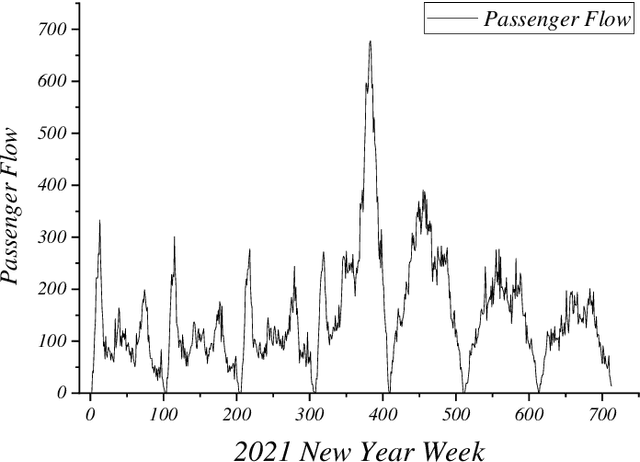
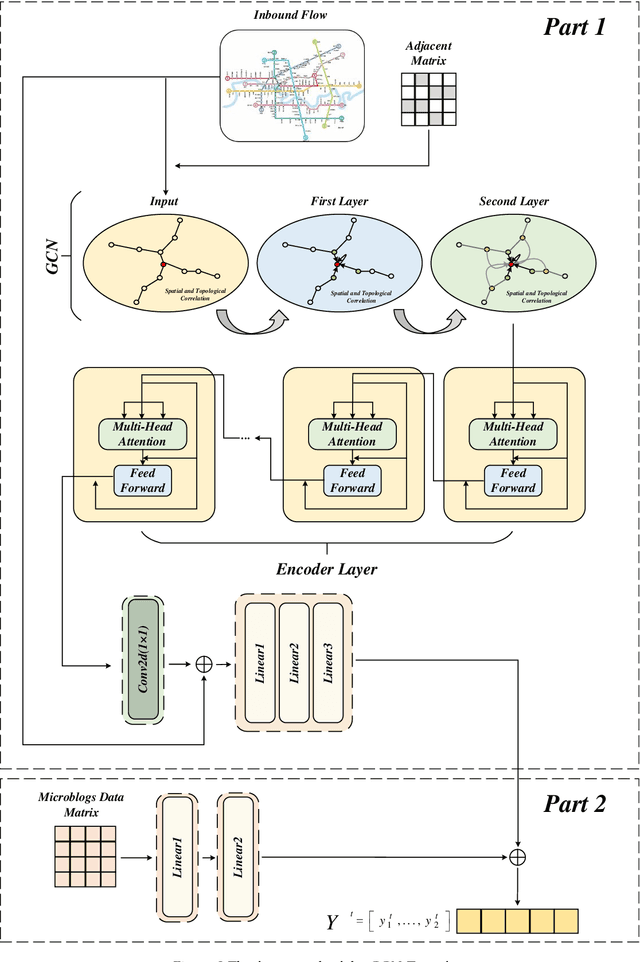
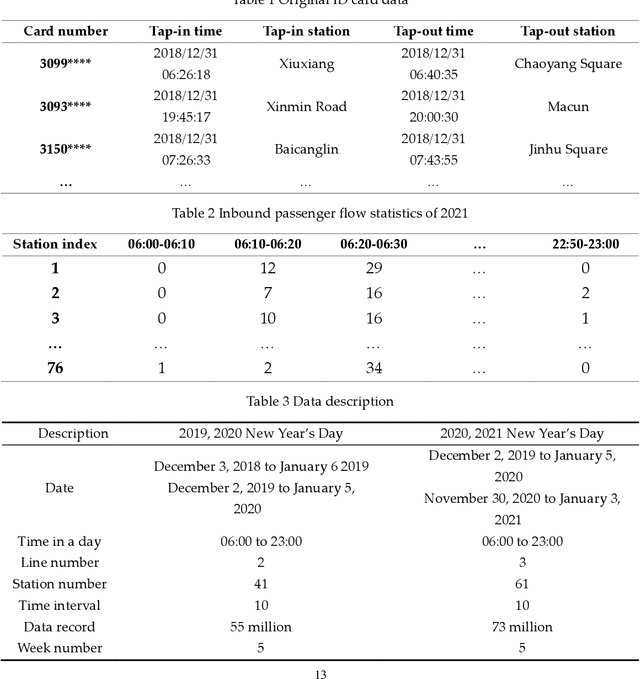
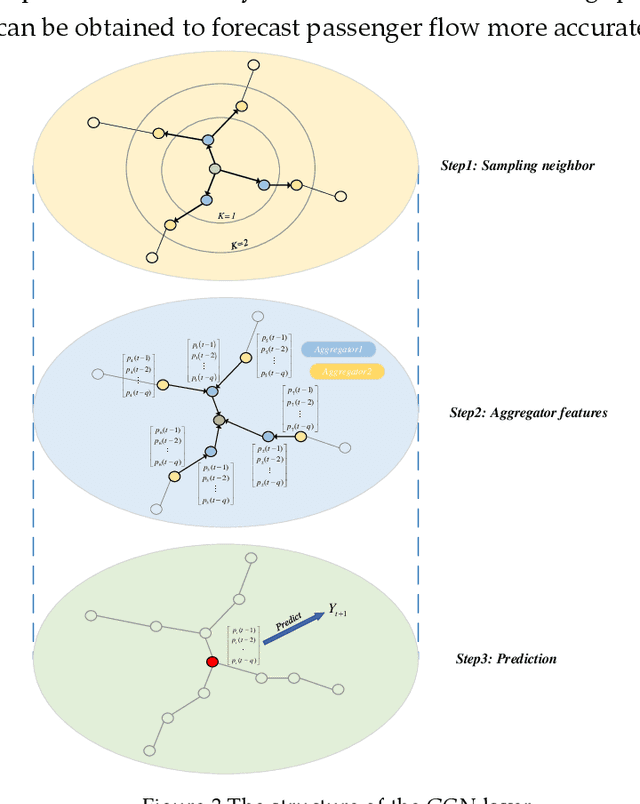
Abstract:The short-term passenger flow prediction of the urban rail transit system is of great significance for traffic operation and management. The emerging deep learning-based models provide effective methods to improve prediction accuracy. However, most of the existing models mainly predict the passenger flow on general weekdays, while few studies focus on predicting the holiday passenger flow, which can provide more significant information for operators because congestions or accidents generally occur on holidays. To this end, we propose a deep learning-based model named GCN-Transformer comprising graph conventional neural network (GCN) and Transformer for short-term passenger flow prediction on holidays. The GCN is applied to extract the spatial features of passenger flows and the Transformer is applied to extract the temporal features of passenger flows. Moreover, in addition to the historical passenger flow data, social media data are also incorporated into the prediction model, which has been proven to have a potential correlation with the fluctuation of passenger flow. The GCN-Transformer is tested on two large-scale real-world datasets from Nanning, China during the New Year holiday and is compared with several conventional prediction models. Results demonstrate its better robustness and advantages among baseline methods, which provides overwhelming support for practical applications of short-term passenger flow prediction on holidays
 Add to Chrome
Add to Chrome Add to Firefox
Add to Firefox Add to Edge
Add to Edge